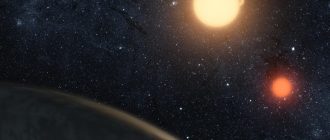
To date, astronomers have discovered hundreds of stars with many planets orbiting them, scattered throughout the galaxy. Each one is unique, but the system orbiting HD 158259 is truly special.
The star itself is about the same mass and slightly larger than the Sun. Six planets revolve around it: super-Earth and five mini-Neptune.
After observing the system for seven years, astronomers have found that all six of these planets orbit HD 158259 in near-perfect orbital resonance. This discovery may help us better understand how planetary systems form and how they end up in the configurations we see.
Orbital resonance is when the orbits of two bodies around their parent body are closely related as the two orbiting bodies exert a gravitational influence on each other. In the solar system, it is quite rare in planetary bodies; the best examples are Pluto and Neptune.
These two bodies are in the so-called 2: 3 orbital resonance. For every two circles Pluto makes around the Sun, Neptune makes three. It is like musical bars played simultaneously, but with different time signatures – two beats for the first, three for the second.
Each planet orbiting HD 158259 is in 3: 2 resonance with the next planet, also described as a period ratio of 1.5. This means that for every three orbital rotations that a planet makes, the next one completes two.
Using measurements made with the SOPHIE spectrograph and the TESS space telescope, an international team of researchers led by astronomer Nathan Hara of the University of Geneva in Switzerland was able to accurately calculate the orbits of each planet.
They give ratios of periods of 1.57, 1.51, 1.53, 1.51 and 1.44 between each pair of planets. It's not exactly perfect resonance – but enough to classify the HD 158259 as an extraordinary system.
And this, according to the researchers, is a sign that the planets orbiting the star have not formed where they are now.
“There are several known compact systems with several planets in resonances, such as TRAPPIST-1 or Kepler-80,” explained astronomer Stephane Oudry of the University of Geneva.
'Such systems are believed to form far from the star before migrating towards it. In this scenario, resonances are critical. '
This is because these resonances occur when planetary embryos in a protoplanetary disk grow and migrate inward, away from the outer edge of the disk. This creates a chain of orbital resonance throughout the system.
Then, as the remaining disk gas dissipates, it can destabilize the orbital resonances – and could be what we see – HD 158259.
'Using these values, on the one hand, and tidal models, on the other, we could limit the internal structure of the planets in future research. Thus, the current state of the system gives us a window into its formation. '
The study was published in Astronomy and Astrophysics.
Sources: Photo: (NASA / Tim Pyle)






